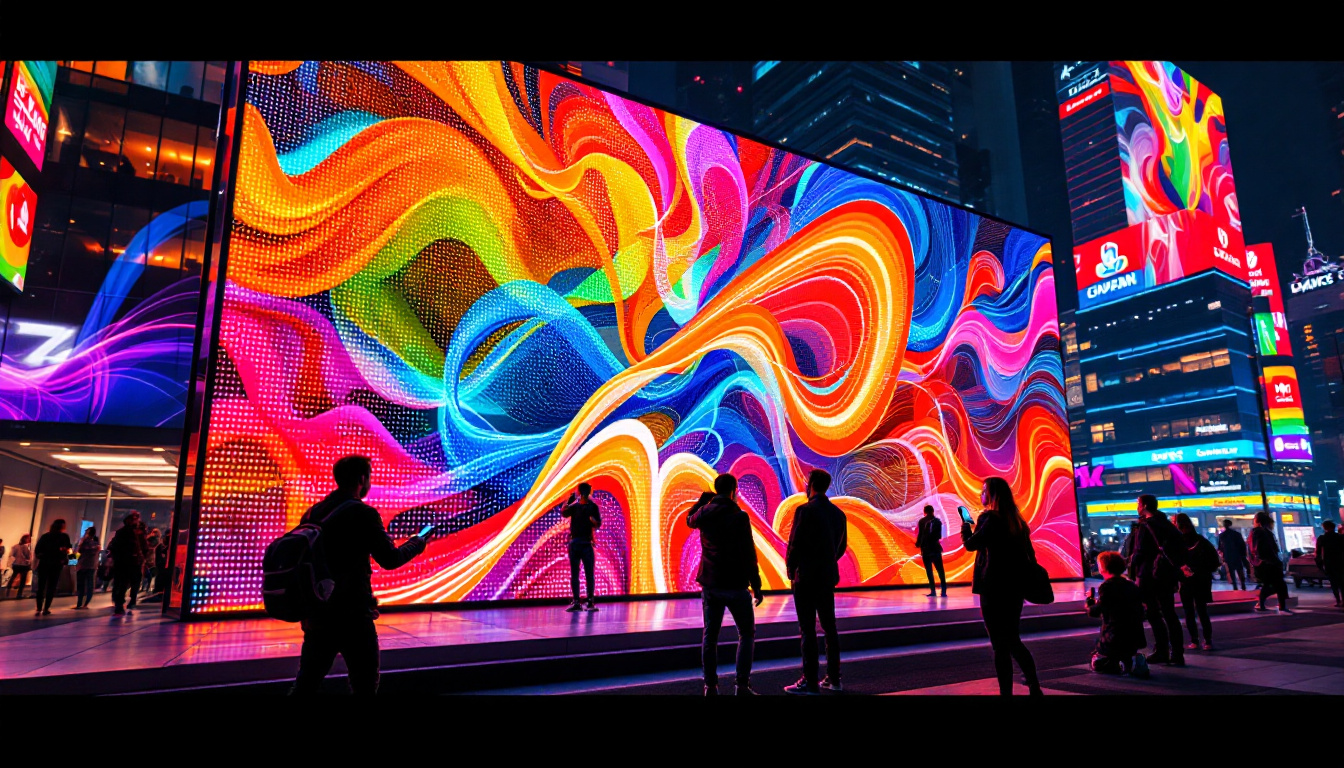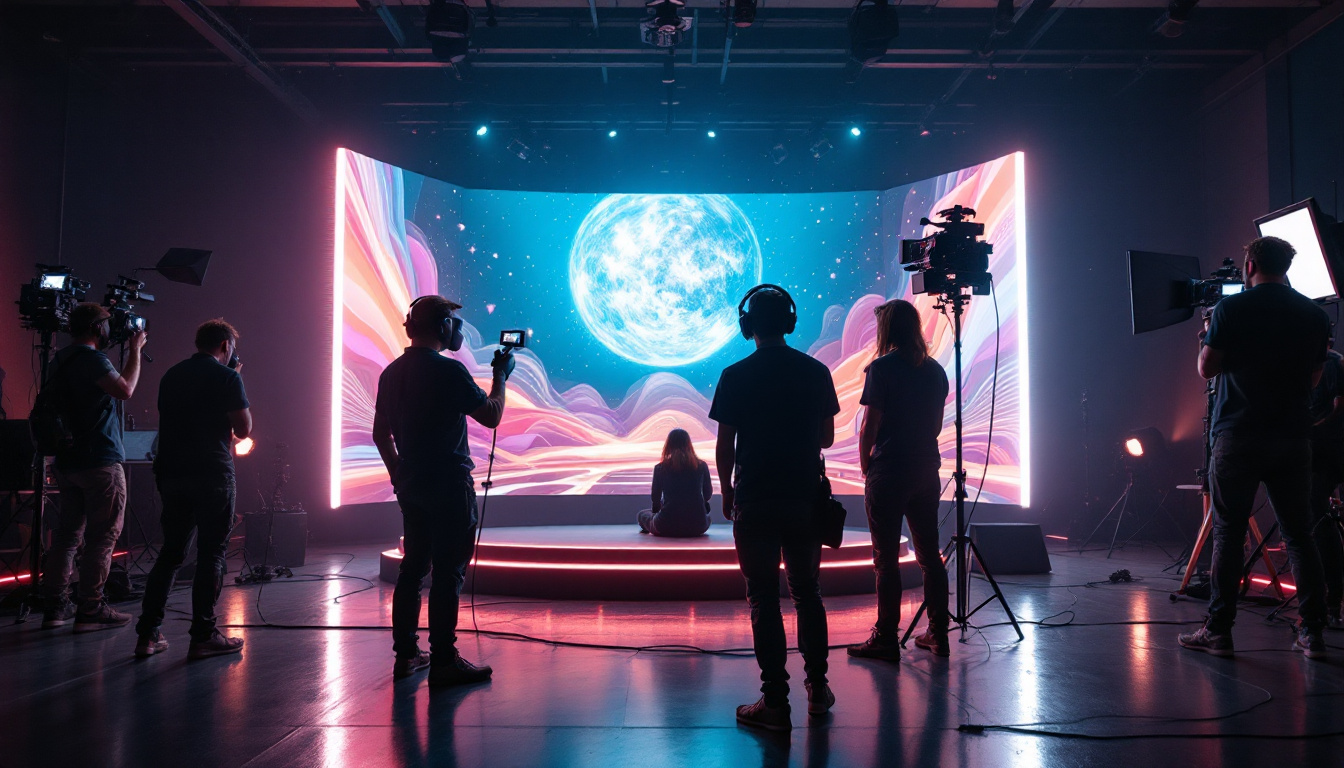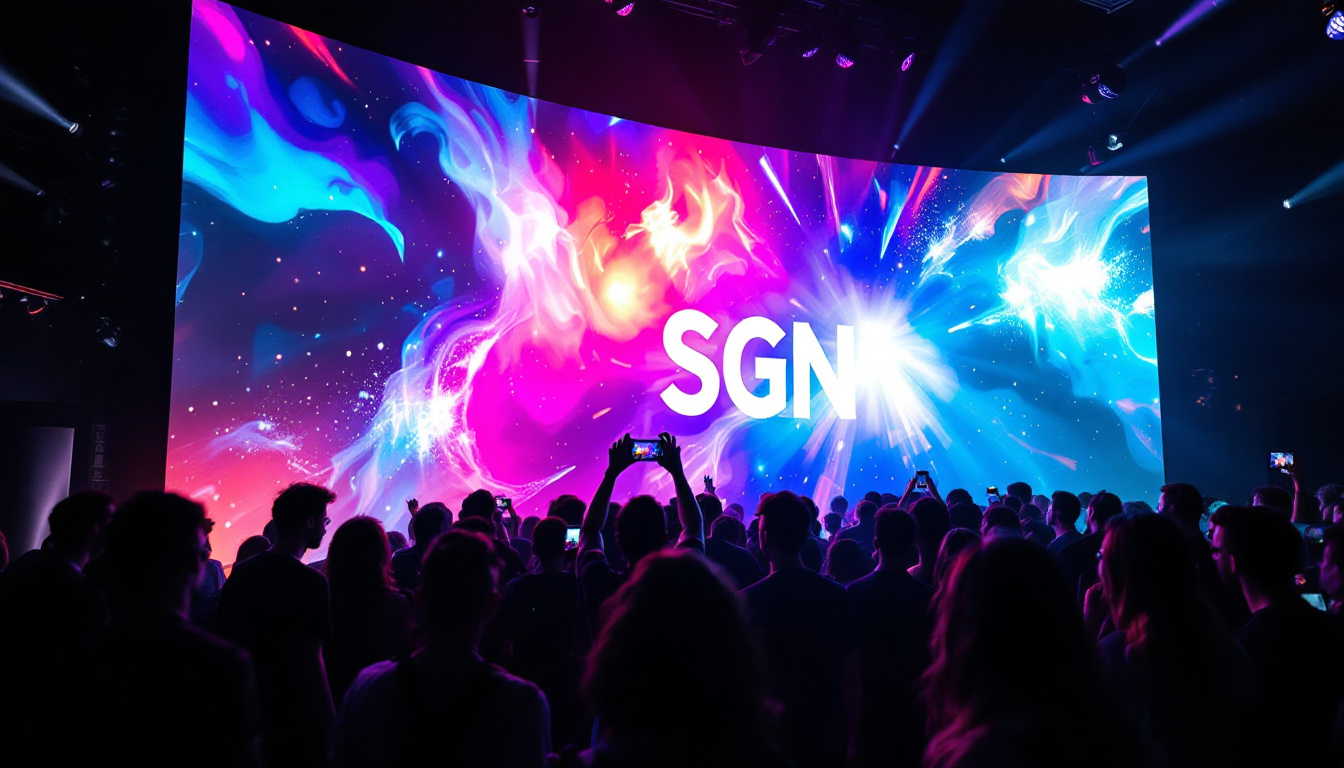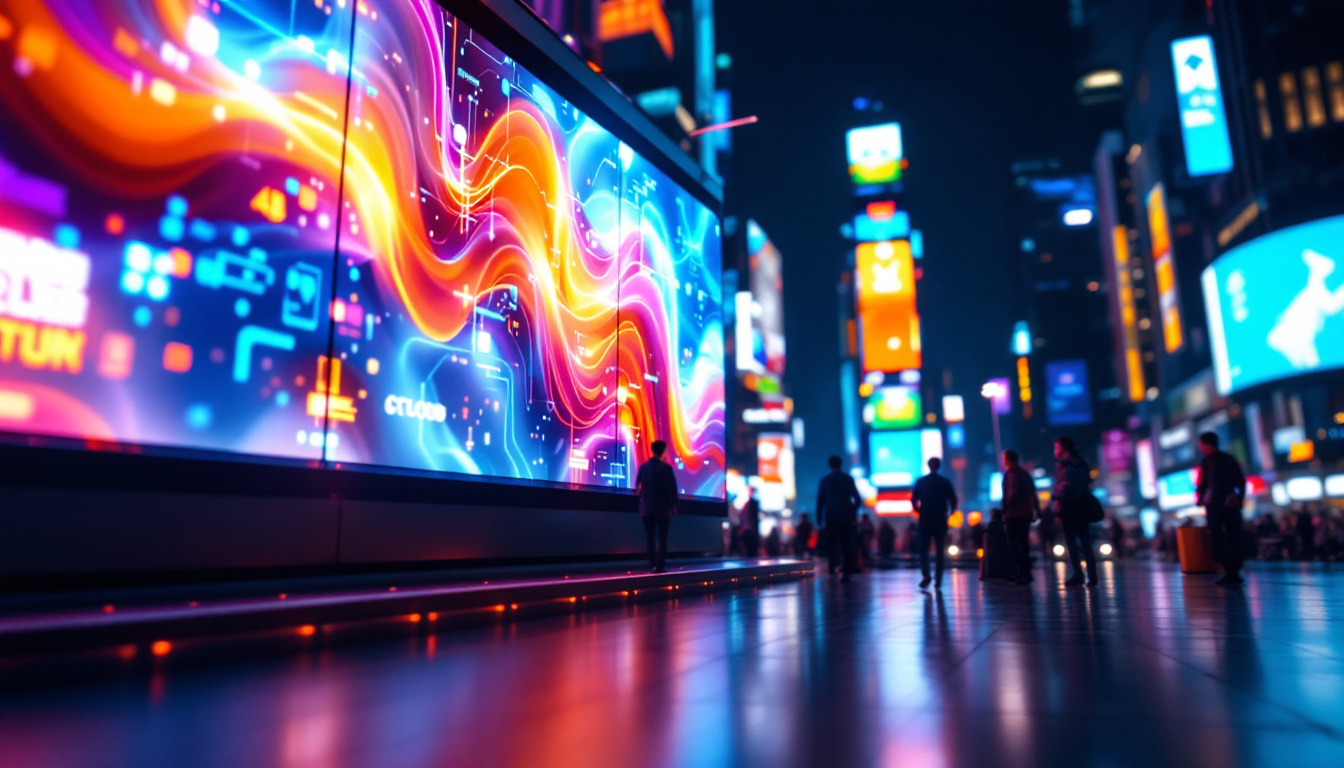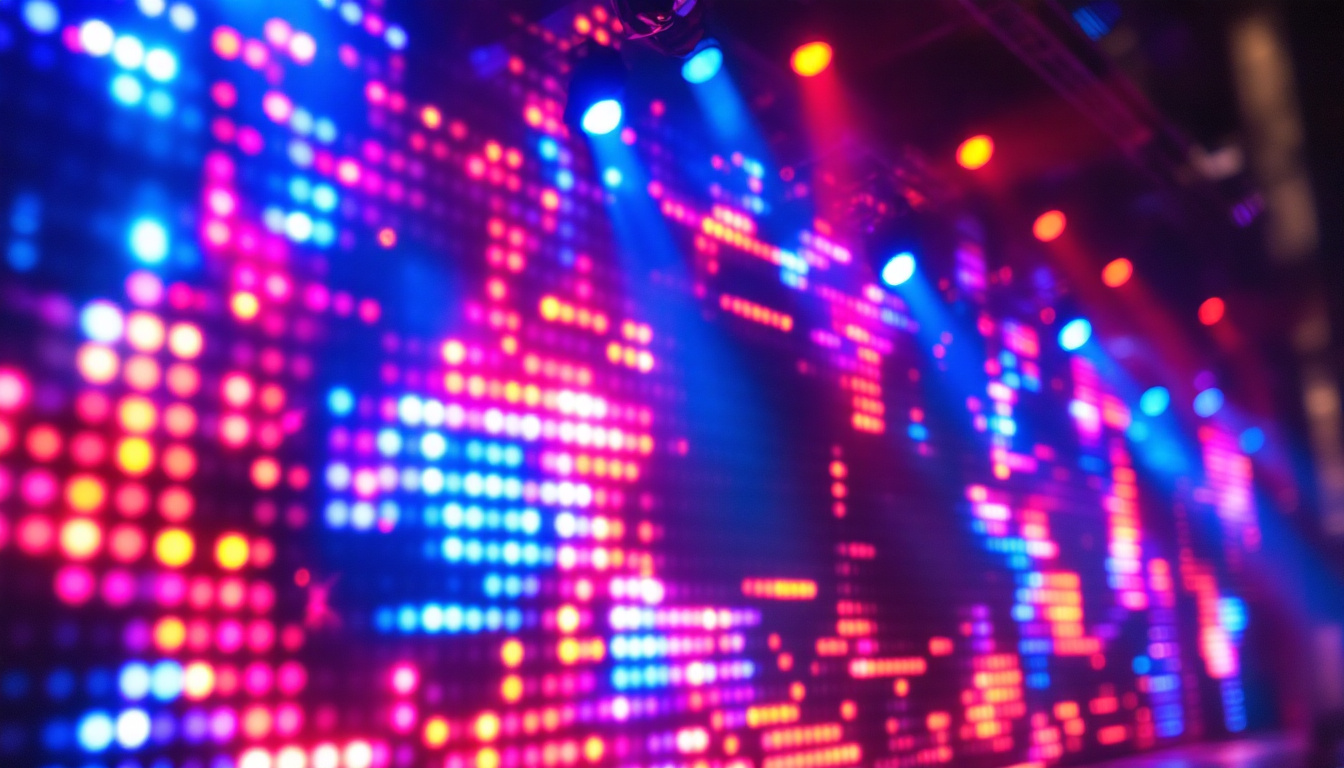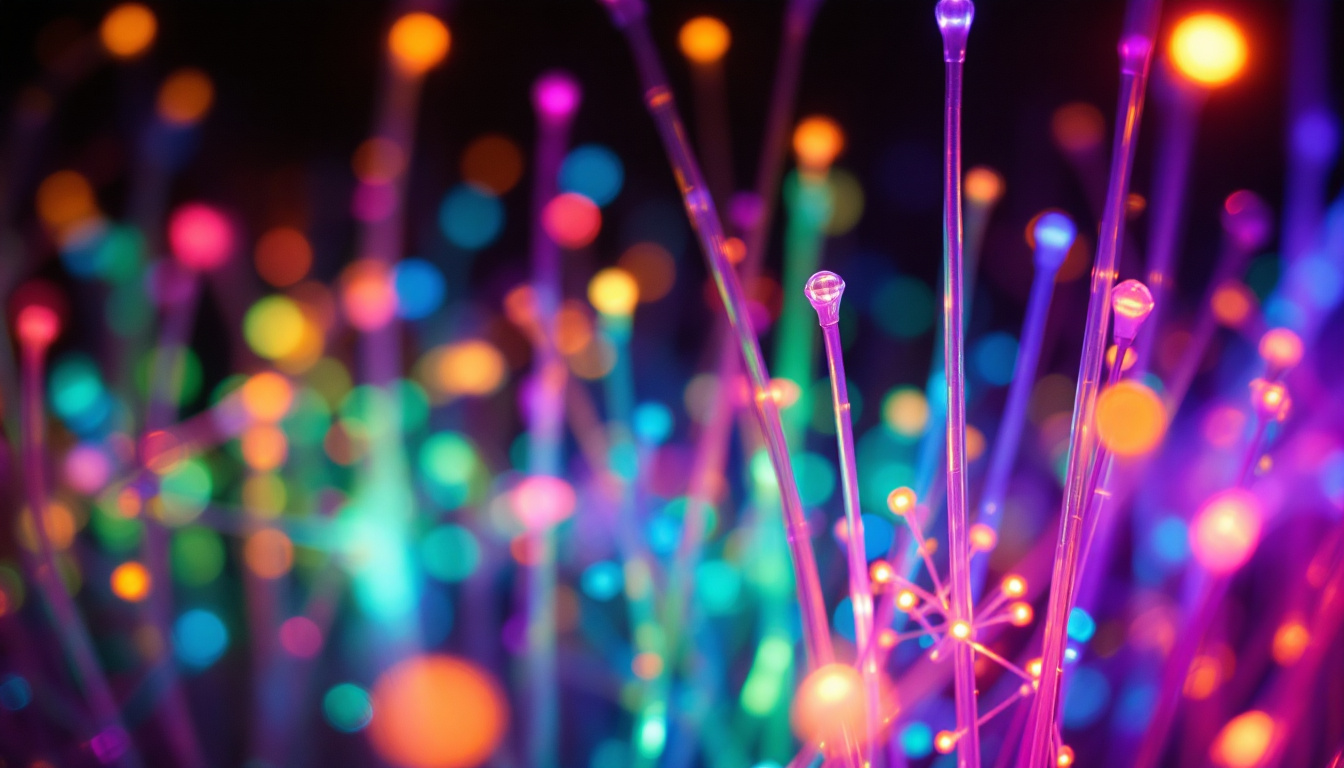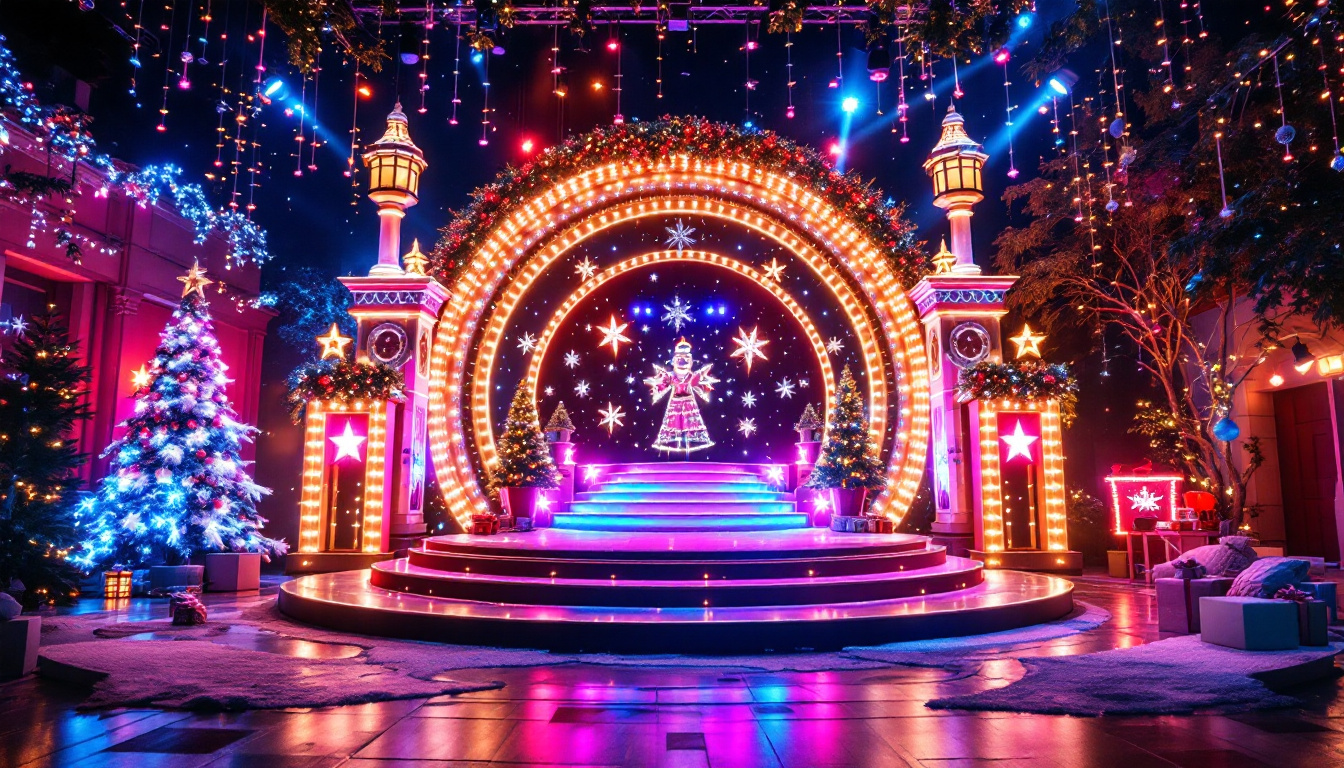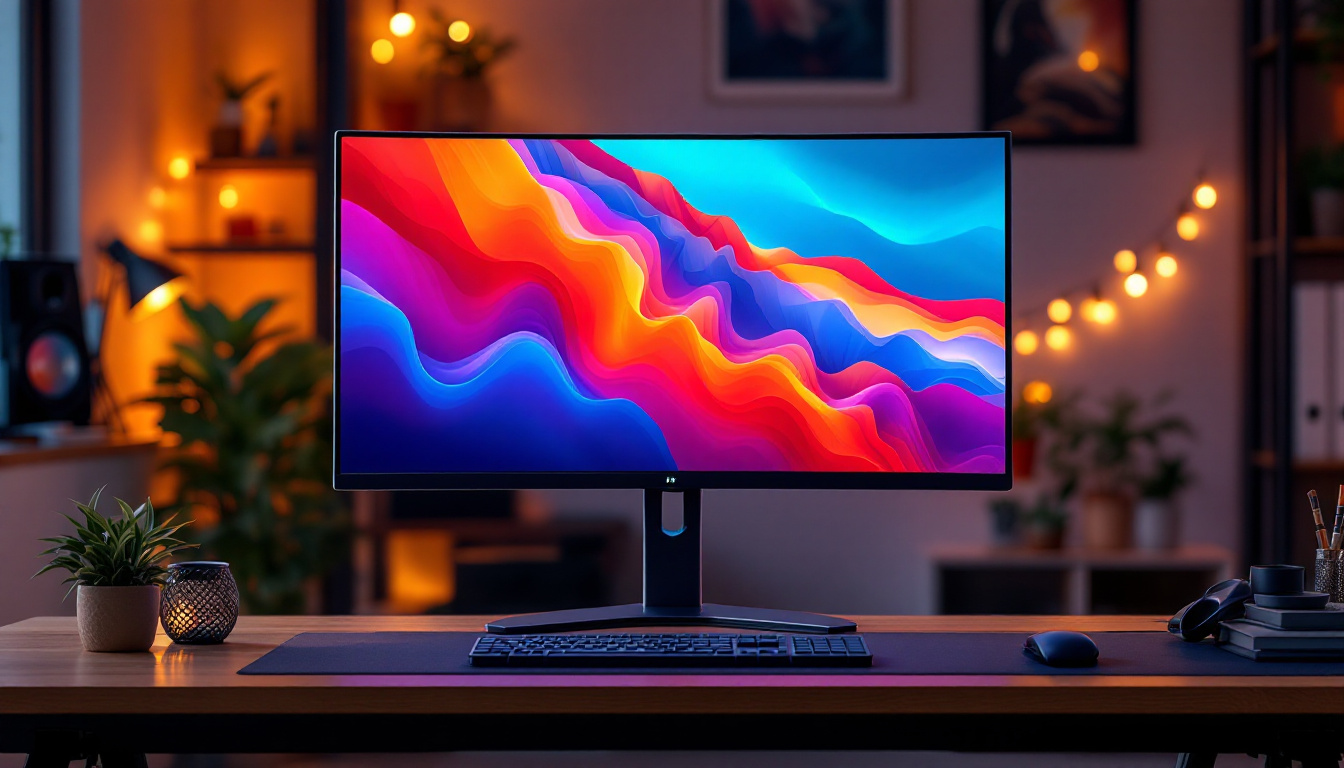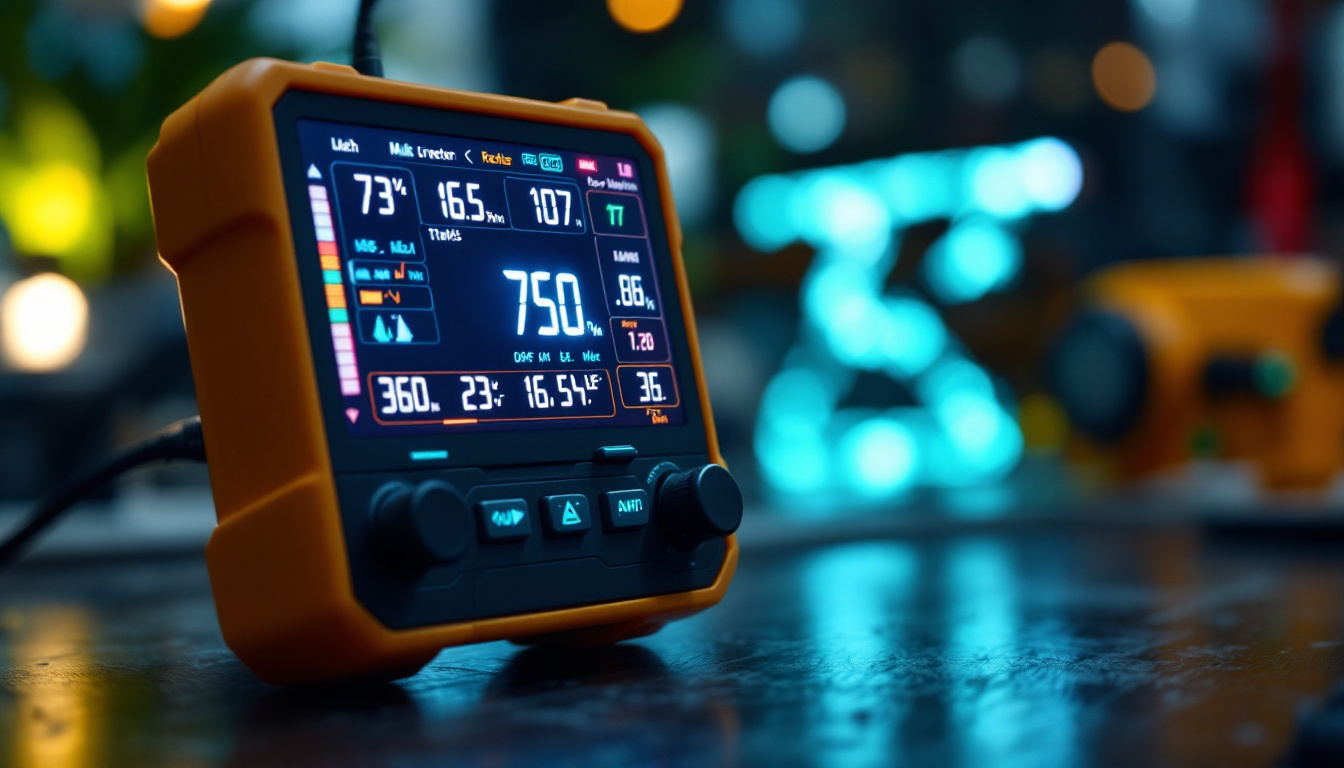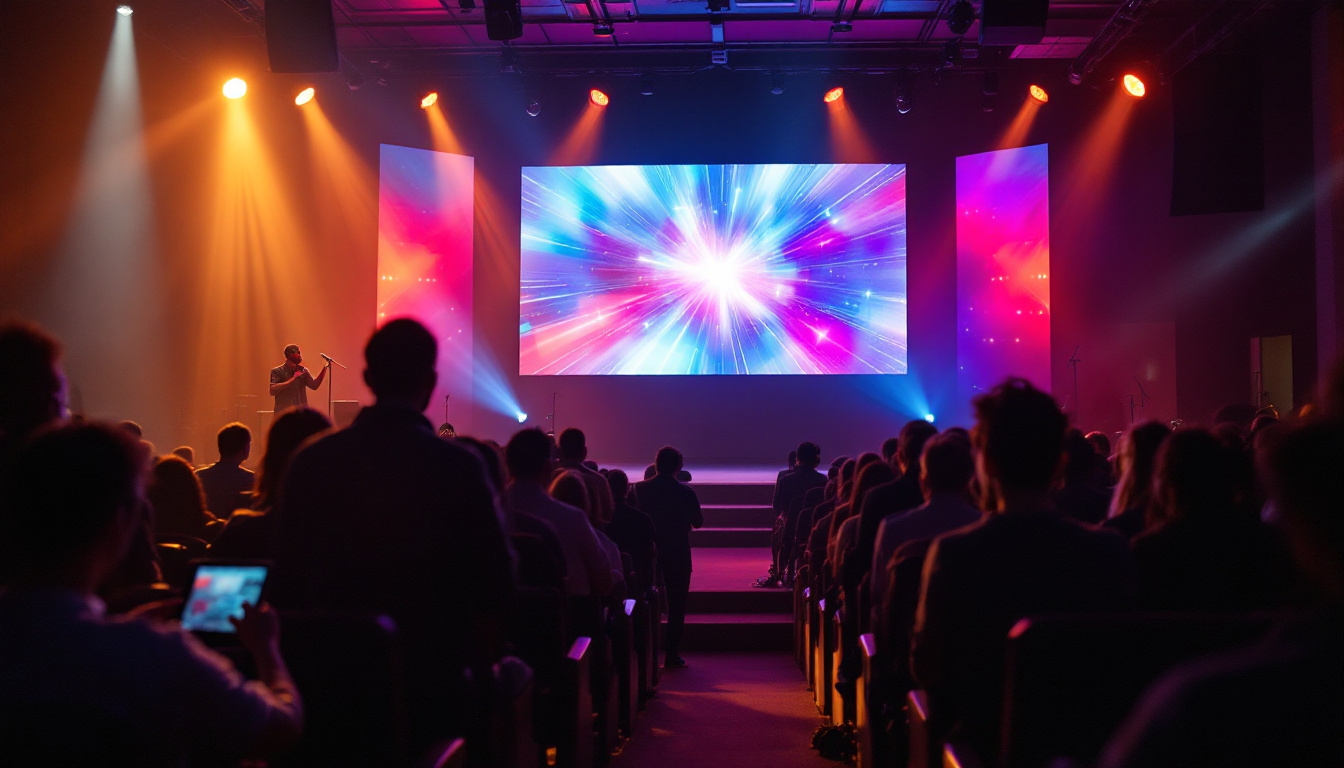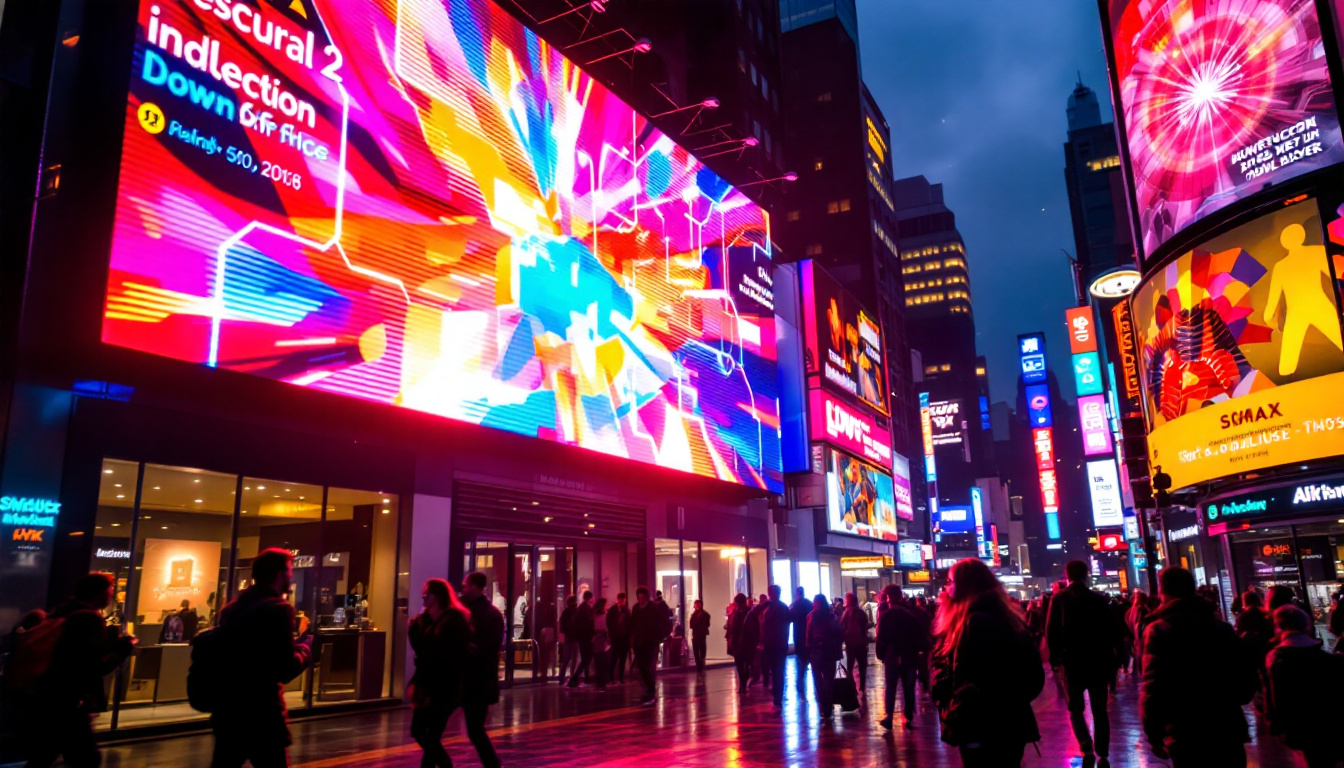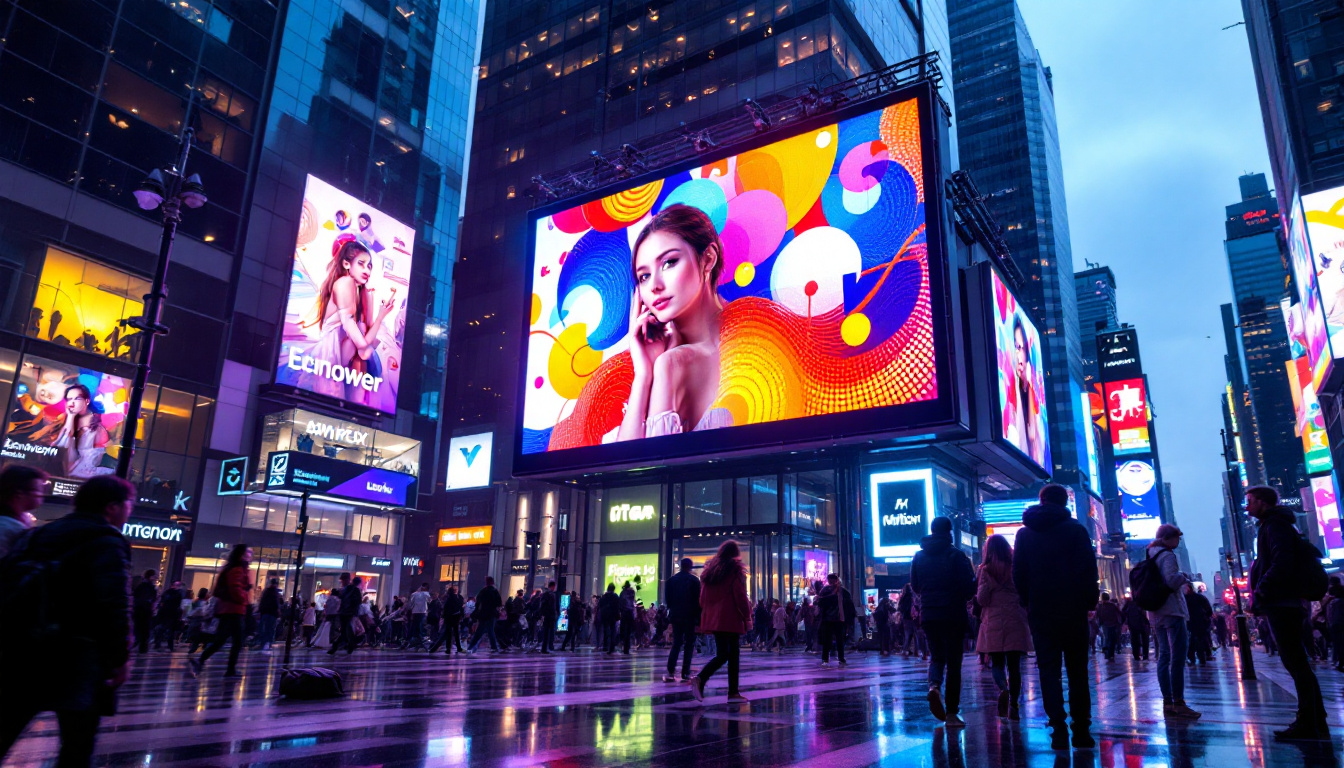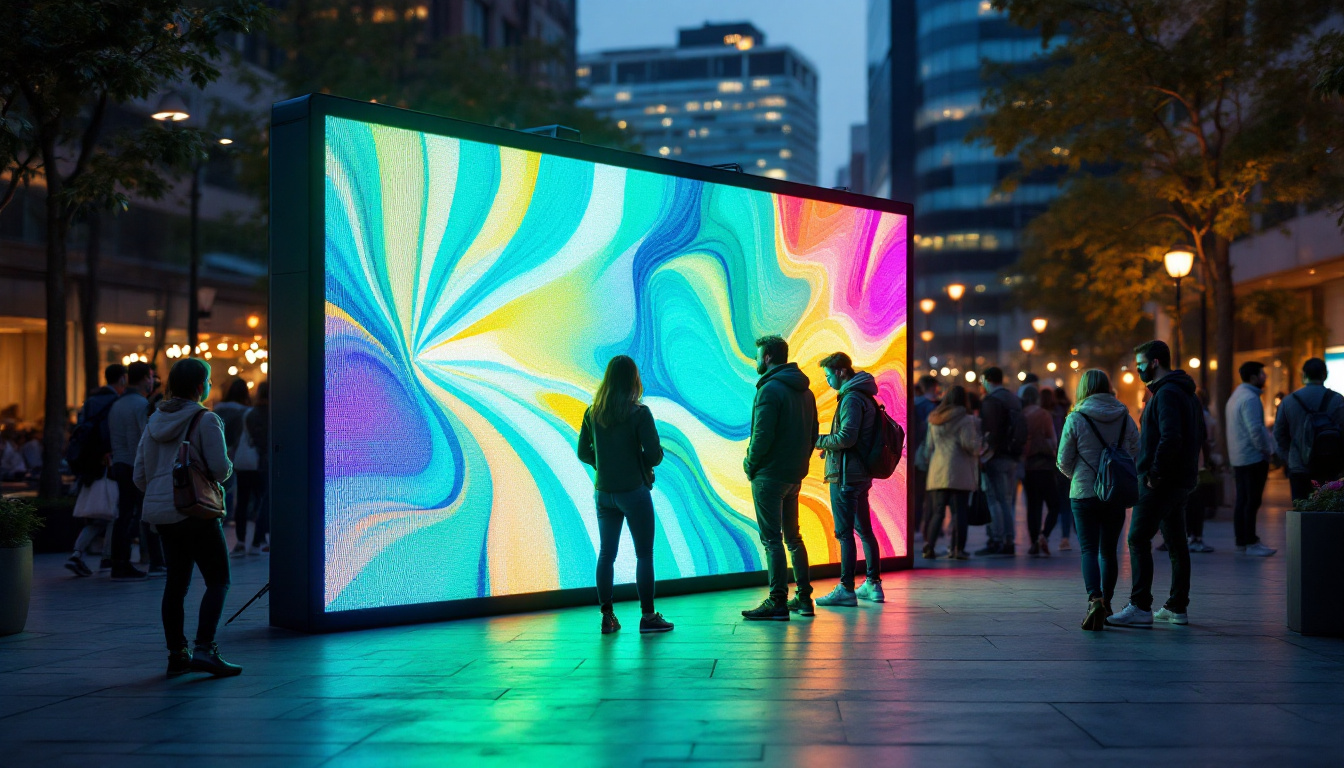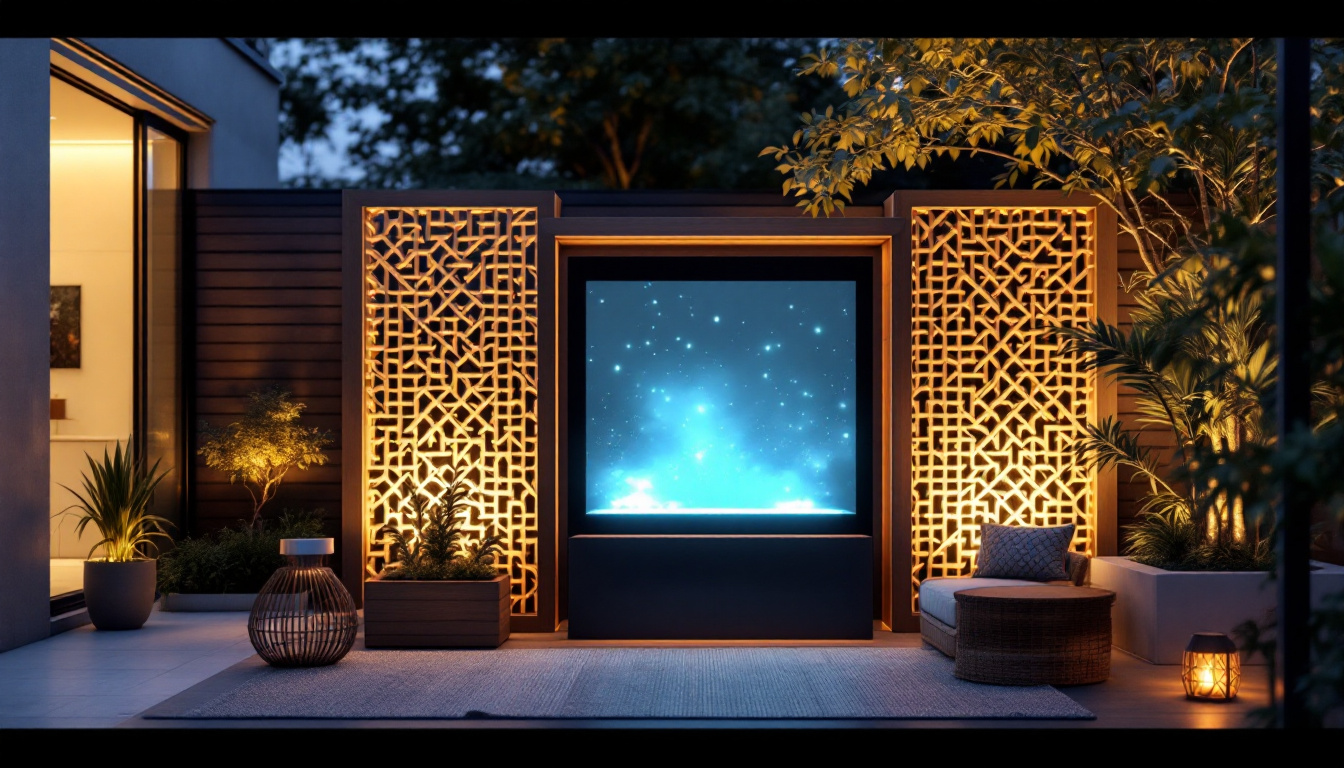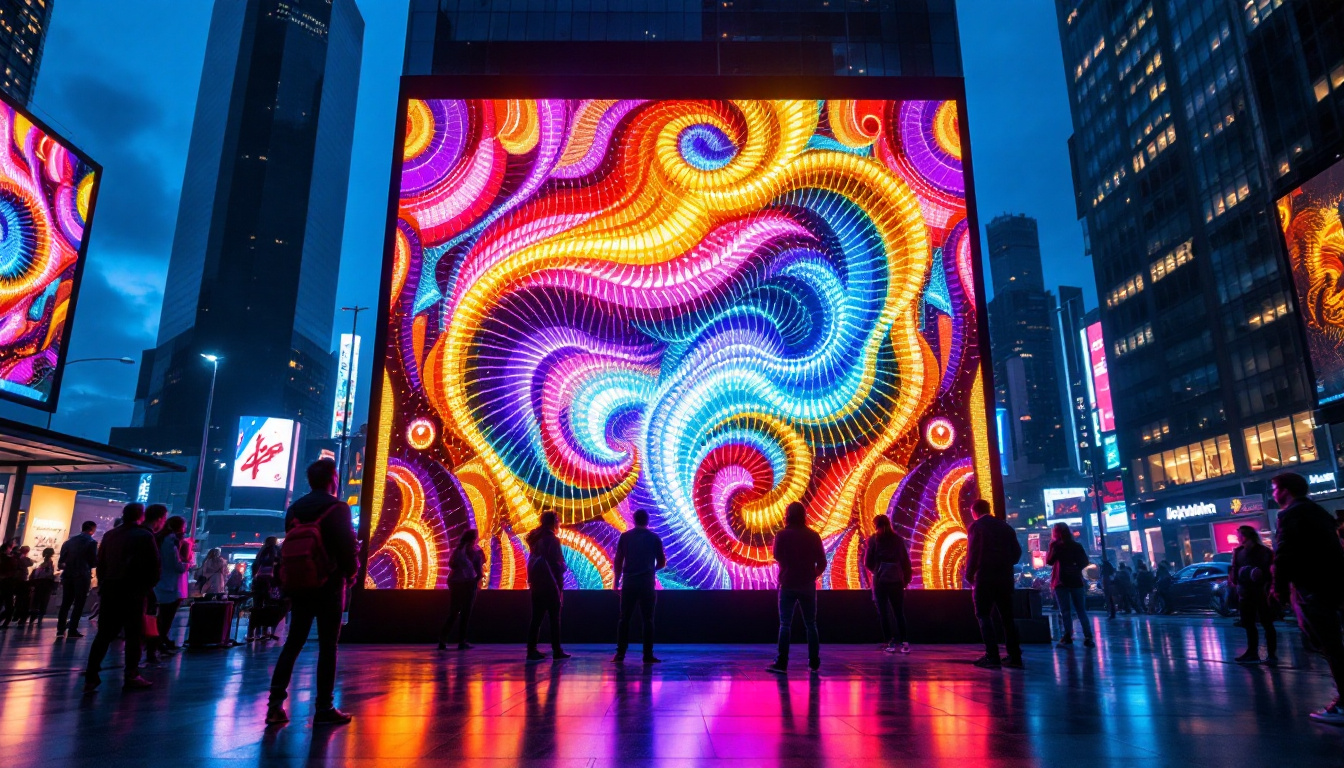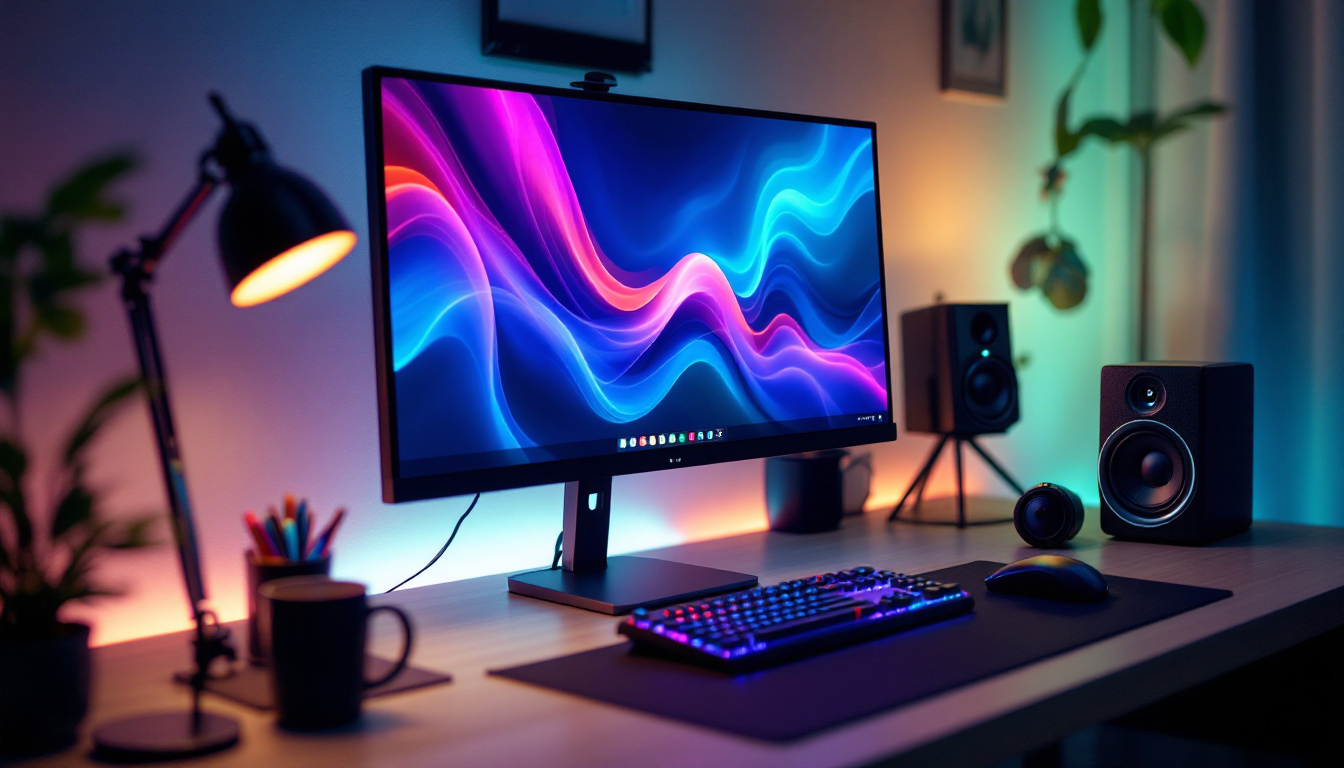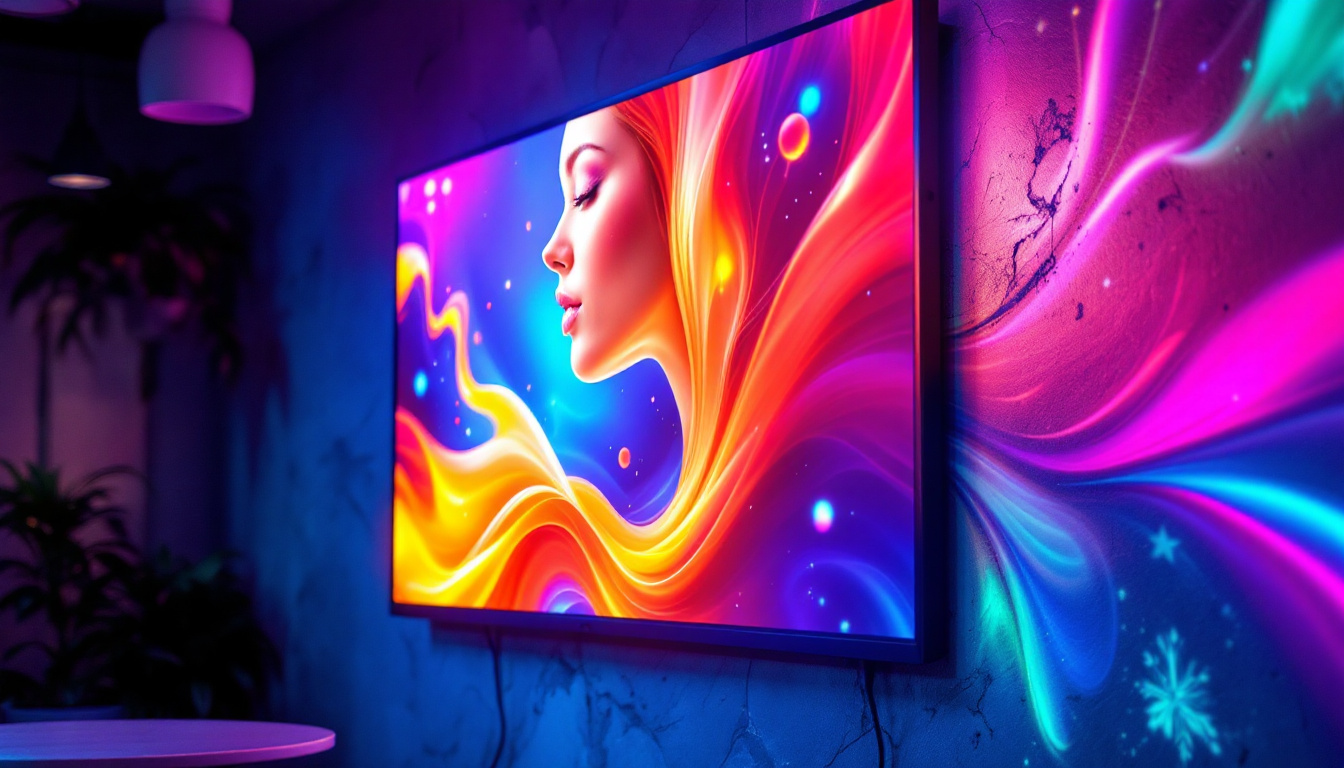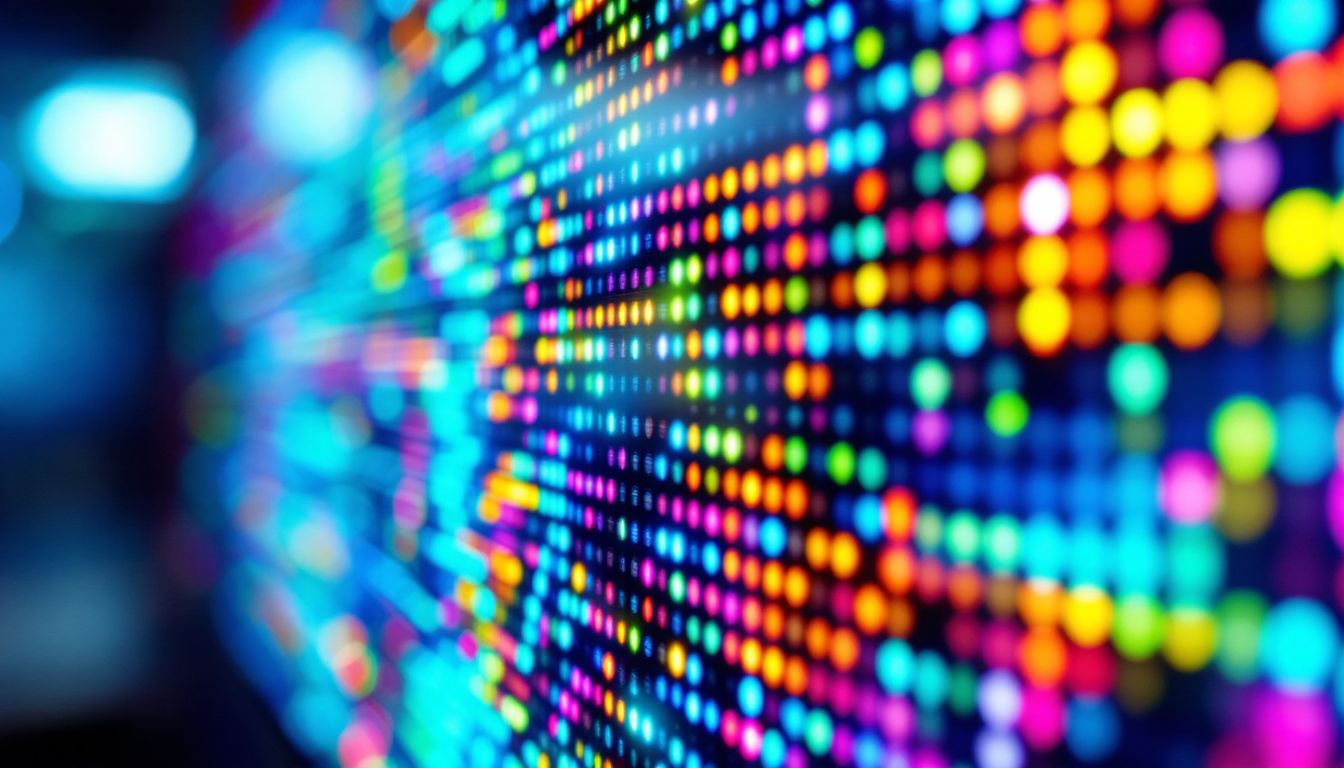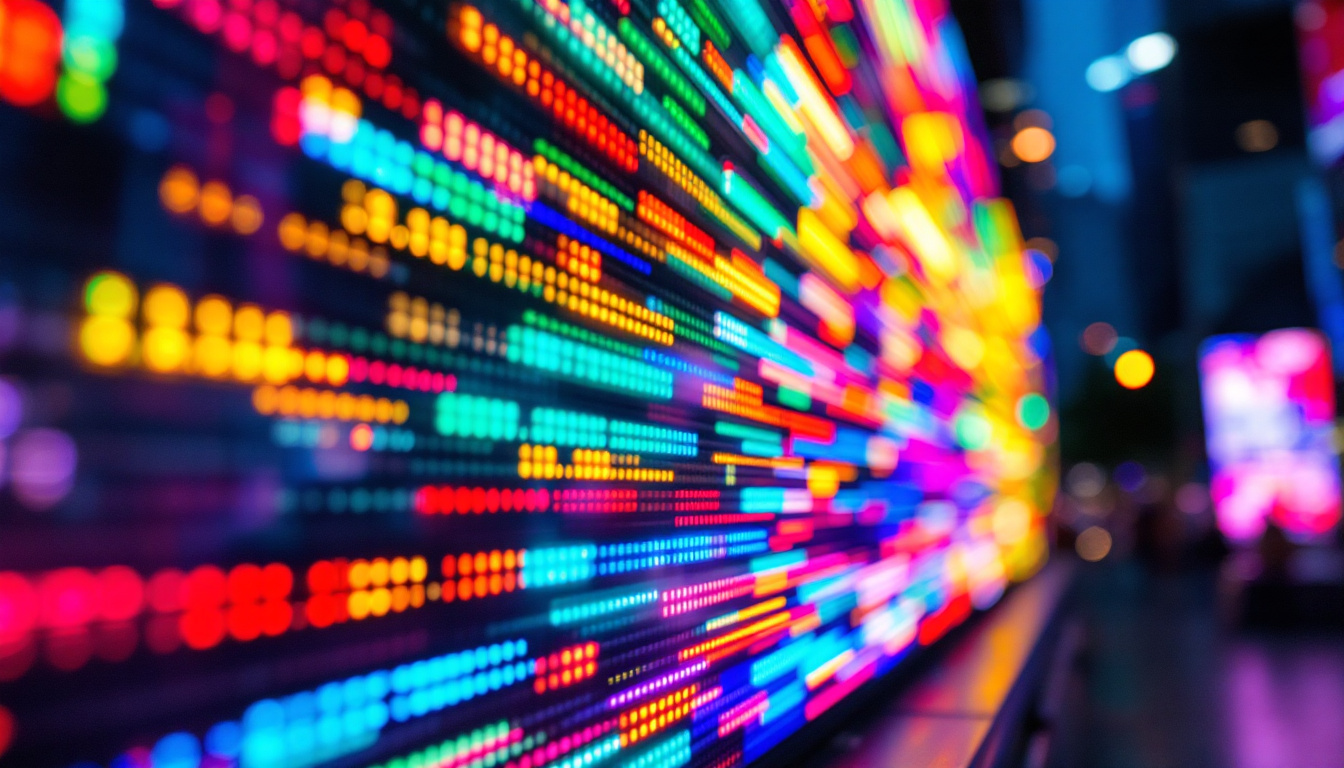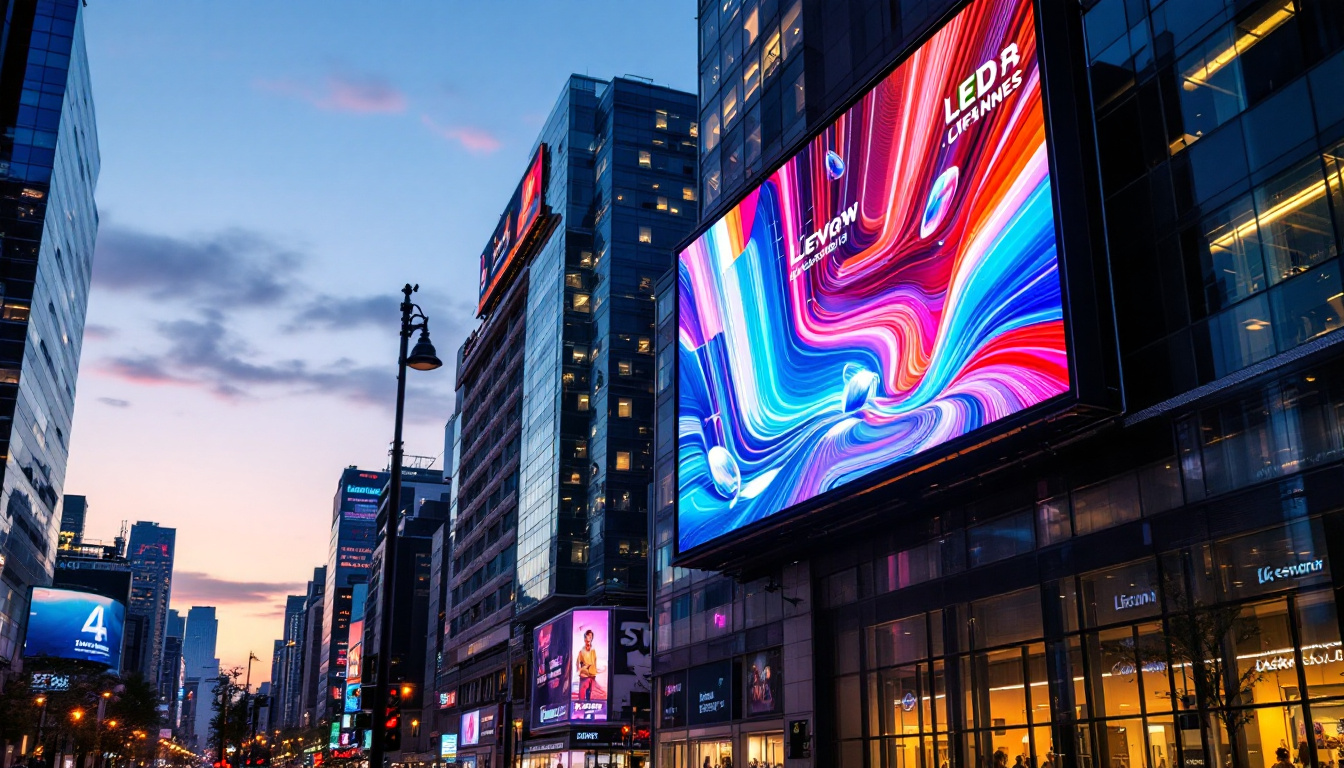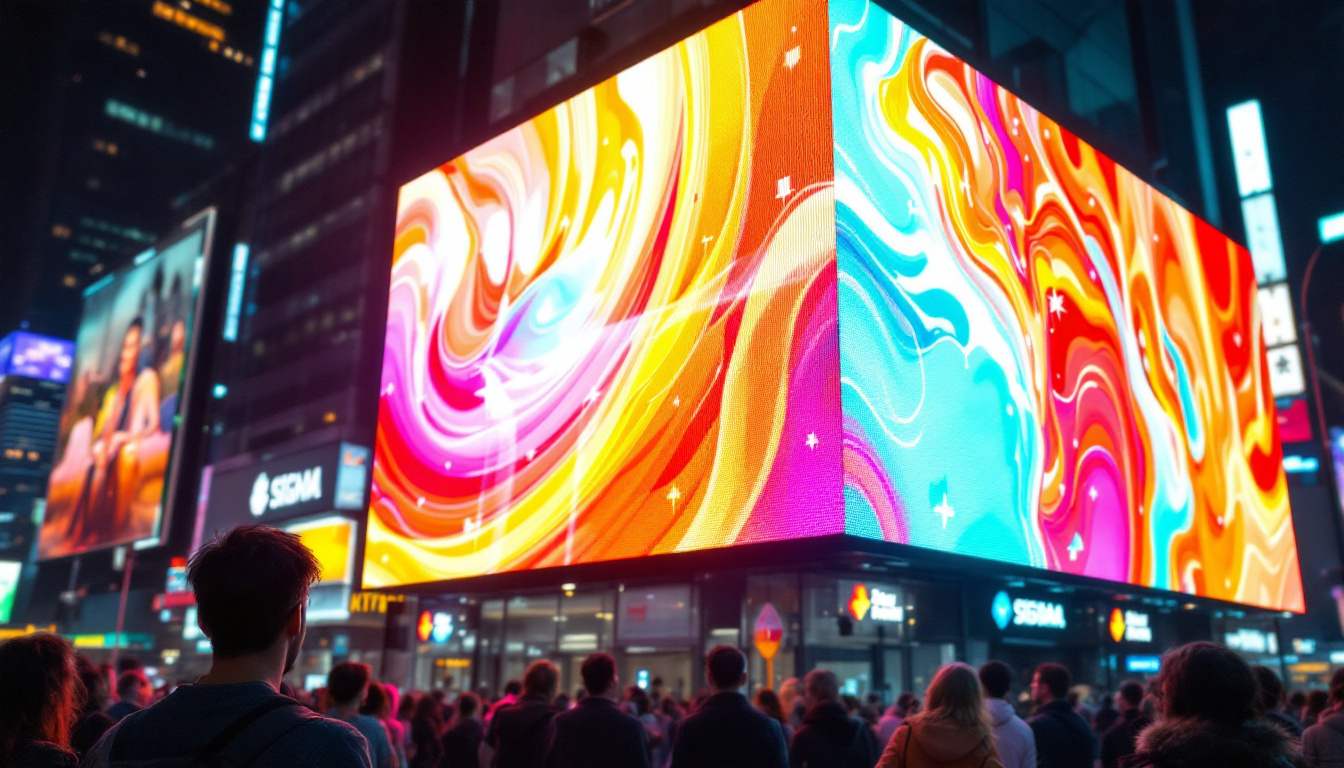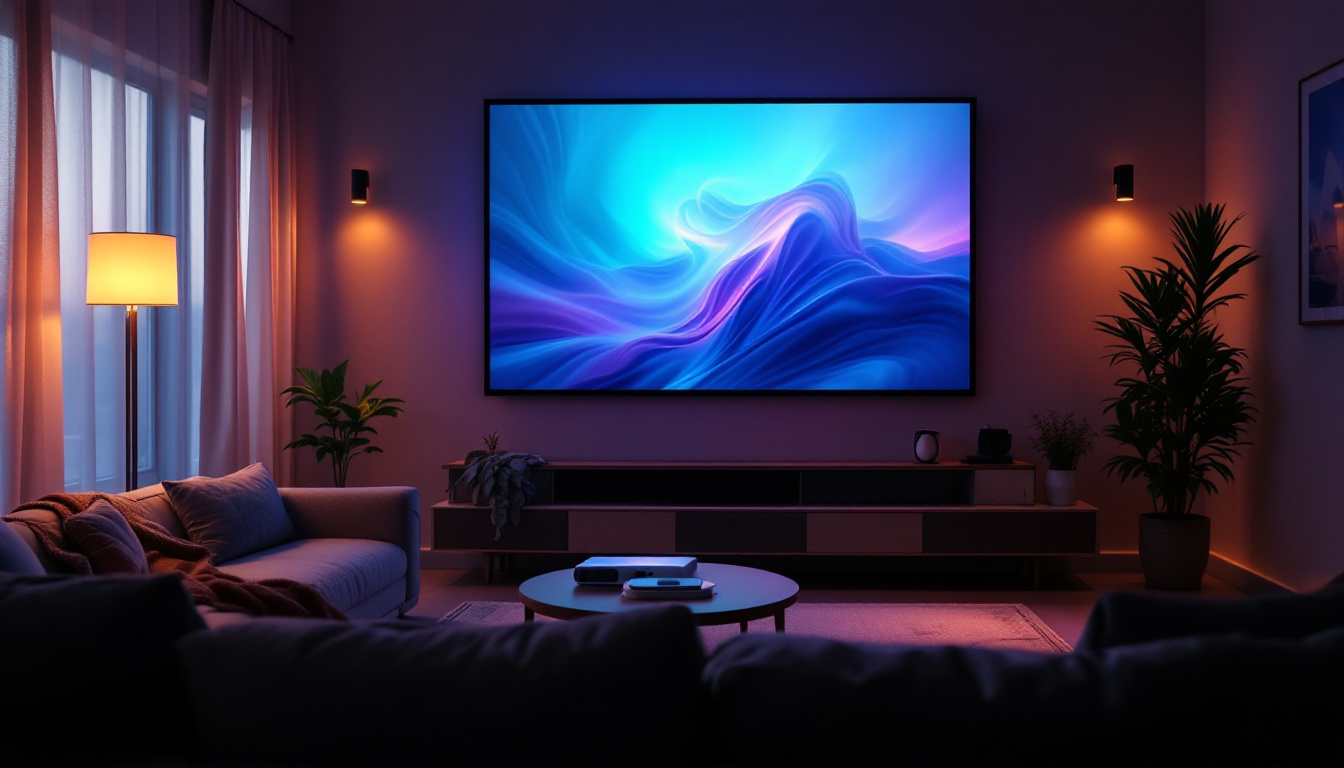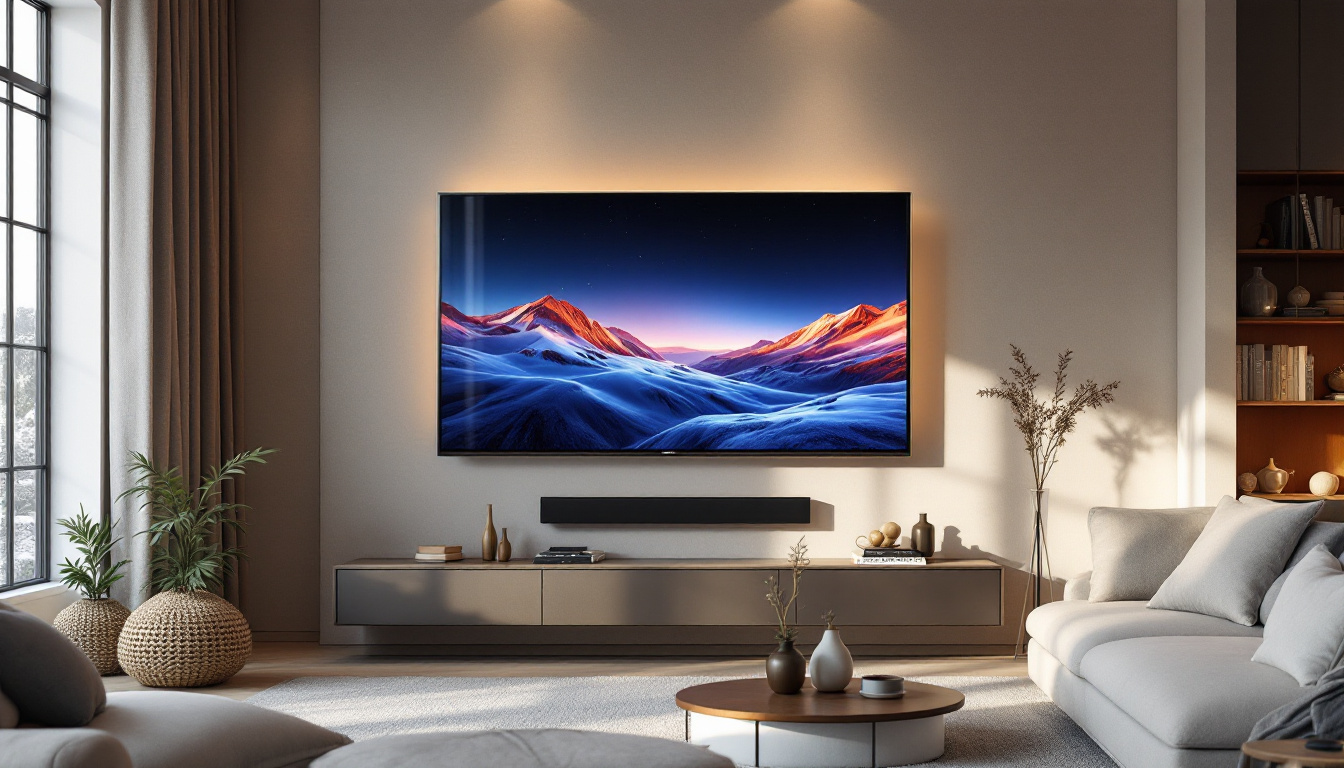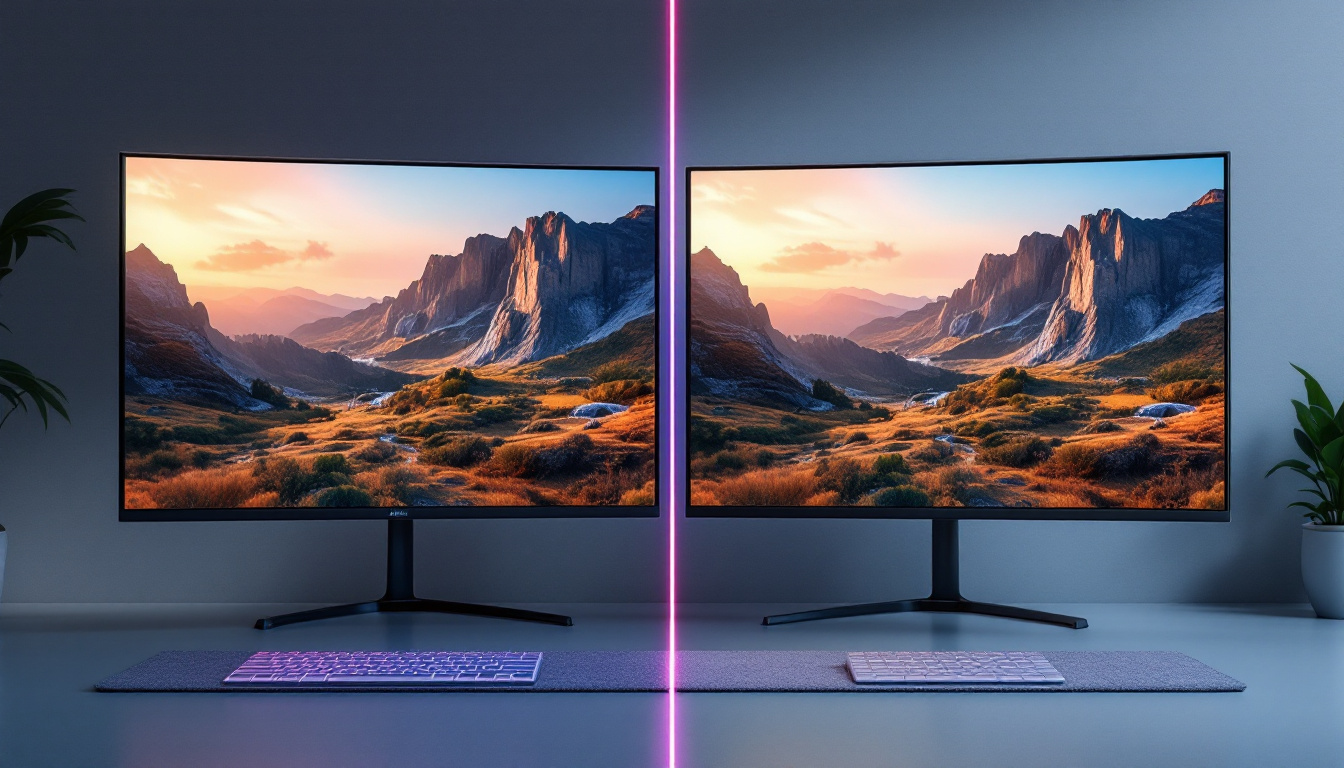Business AV: LED Display Explained
In the modern business landscape, visual communication has become increasingly vital. Among the various tools available, LED displays stand out as a powerful medium for conveying messages, enhancing brand visibility, and engaging audiences. This article delves into the intricacies of LED displays, exploring their technology, applications, benefits, and considerations for businesses looking to invest in this dynamic visual solution.
Understanding LED Display Technology
LED displays utilize light-emitting diodes (LEDs) to produce images and videos. These displays can be seen in various settings, from retail stores to corporate events, and they offer a range of sizes and resolutions. Understanding the underlying technology is essential for businesses aiming to leverage LED displays effectively.
How LED Displays Work
At the core of an LED display are numerous tiny LED bulbs that emit light when an electric current passes through them. These bulbs are arranged in a grid format, with each pixel composed of red, green, and blue (RGB) LEDs. By adjusting the intensity of each color, the display can produce a wide spectrum of colors and images.
There are primarily two types of LED displays: direct view and backlit. Direct view displays are made up of individual LEDs that create the image directly, while backlit displays use LEDs to illuminate a liquid crystal display (LCD) panel. The direct view technology is more common in large-scale displays, such as billboards and outdoor screens, due to its brightness and visibility. Additionally, advancements in technology have led to the development of high dynamic range (HDR) capabilities in some LED displays, enhancing contrast and color accuracy, which is particularly beneficial for video content.
Types of LED Displays
LED displays come in various forms, each designed for specific applications. The most common types include:
- Indoor LED Displays: These are designed for use in controlled environments such as conference rooms, retail spaces, and theaters. They typically have a higher pixel density, offering sharper images and finer details.
- Outdoor LED Displays: Built to withstand the elements, outdoor displays are brighter and more durable than their indoor counterparts. They are often used for advertising and public announcements in high-traffic areas.
- Transparent LED Displays: These innovative displays allow light to pass through, making them ideal for storefronts and exhibitions where visibility from both sides is essential.
Another notable type is the Flexible LED Displays, which can be bent and shaped to fit various surfaces, allowing for creative installations that were previously impossible. This flexibility opens up new avenues for artistic expression in advertising and design, enabling businesses to capture the attention of potential customers with unique visual presentations. Furthermore, Video Wall Displays are composed of multiple smaller LED screens tiled together to form a larger display. This configuration allows for high-resolution images and videos to be showcased seamlessly, making them popular in control rooms, sports arenas, and large events where impactful visuals are crucial.
Applications of LED Displays in Business
LED displays have found their way into various business sectors, serving multiple purposes that enhance communication and engagement. Their versatility makes them suitable for a wide range of applications.
Advertising and Marketing
One of the most significant uses of LED displays is in advertising. Businesses can showcase their products, services, and promotions in vibrant colors and dynamic formats. Outdoor LED billboards can attract attention from passersby, while indoor displays can enhance the shopping experience by providing information and entertainment.
Moreover, the ability to change content in real-time allows businesses to adapt their messaging based on current events, customer preferences, or seasonal promotions. This flexibility can lead to increased foot traffic and sales. For instance, a restaurant could promote a happy hour special during peak times or a retail store could highlight limited-time offers, ensuring that the messaging resonates with customers at the right moment.
Corporate Communication
In corporate environments, LED displays serve as effective tools for internal communication. They can be used to display important announcements, schedules, and performance metrics in real-time. This ensures that employees are always informed and engaged, fostering a culture of transparency and collaboration.
Additionally, during meetings and conferences, LED displays can enhance presentations by providing high-quality visuals that capture the audience’s attention. This can lead to more effective communication of ideas and strategies. Companies can also utilize these displays for training sessions, showcasing instructional videos or interactive content that can improve learning outcomes and retention among staff members.
Event and Entertainment Industry
The event and entertainment industry has embraced LED displays for their ability to create immersive experiences. From concerts to trade shows, these displays can be used to create stunning visual backdrops and dynamic content that captivates audiences.
Furthermore, LED screens can be configured in various shapes and sizes, allowing for creative designs that enhance the overall aesthetic of an event. This adaptability makes them a popular choice for event planners looking to make a lasting impression. For example, at music festivals, LED walls can be synchronized with the performance, creating a cohesive and engaging atmosphere that elevates the audience’s experience. Additionally, the use of LED technology in sports arenas not only displays scores and replays but also engages fans with interactive content, enhancing the overall excitement of the event.
Moreover, the integration of LED displays in live events extends beyond mere visuals; they can also serve as platforms for social media interaction, allowing attendees to see their posts and photos shared in real-time. This creates a sense of community and encourages more participation, as people are eager to see their contributions featured on the big screen. The potential for audience engagement through LED technology is vast, making it an essential tool for modern event management.
Benefits of Using LED Displays
Investing in LED displays offers numerous advantages for businesses. Understanding these benefits can help organizations make informed decisions about their visual communication strategies.
High Visibility and Brightness
One of the standout features of LED displays is their brightness. They can produce vivid colors and sharp images, making them highly visible even in bright sunlight. This quality is particularly beneficial for outdoor advertising, where competition for attention is fierce.
Moreover, the high contrast ratio of LED displays ensures that content remains clear and legible from various distances, making them suitable for both close-up and far-away viewing.
Energy Efficiency
LED technology is known for its energy efficiency compared to traditional display technologies. LED displays consume less power while delivering superior brightness and color quality. This not only reduces operational costs but also minimizes the environmental impact, aligning with the growing trend towards sustainability in business practices.
Longevity and Durability
LED displays are built to last. With a lifespan of up to 100,000 hours, they outlast many other display technologies. This longevity means less frequent replacements and lower maintenance costs over time. Additionally, outdoor LED displays are designed to withstand harsh weather conditions, ensuring reliable performance in various environments.
Considerations When Choosing LED Displays
While LED displays offer numerous benefits, businesses should consider several factors before making a purchase. These considerations can help ensure that the chosen display meets the organization’s specific needs and objectives.
Resolution and Pixel Pitch
The resolution of an LED display is crucial in determining the quality of the images it produces. Higher resolution displays have more pixels per square inch, resulting in clearer and sharper images. Pixel pitch, which refers to the distance between the centers of two adjacent pixels, also plays a significant role. A smaller pixel pitch is ideal for close viewing distances, while a larger pixel pitch may suffice for displays viewed from afar.
Businesses should assess their viewing distance and content type to select an appropriate resolution and pixel pitch that meets their requirements.
Installation and Maintenance
Installing an LED display can be a complex process, requiring careful planning and execution. Businesses should consider the location, mounting options, and any necessary infrastructure upgrades. Additionally, regular maintenance is essential to ensure optimal performance and longevity. Understanding the maintenance requirements and potential costs involved can help businesses budget effectively.
Content Management
Content is key to the effectiveness of an LED display. Businesses must have a robust content management system (CMS) in place to create, schedule, and update content easily. A user-friendly CMS allows for seamless integration of multimedia elements, ensuring that the display remains fresh and engaging.
Furthermore, businesses should consider the type of content they plan to display, as this will influence the design and functionality of the LED display.
Future Trends in LED Display Technology
The LED display market is constantly evolving, with new technologies and trends emerging regularly. Staying informed about these developments can help businesses remain competitive and leverage the latest advancements in visual communication.
Advancements in Resolution and Color Accuracy
As technology progresses, LED displays are becoming increasingly capable of delivering higher resolutions and improved color accuracy. Innovations such as microLED technology promise to enhance image quality significantly, allowing for even more vibrant colors and finer details.
These advancements will enable businesses to create more immersive and engaging visual experiences, further blurring the lines between physical and digital environments.
Integration with Smart Technology
The integration of LED displays with smart technology is another trend gaining traction. Smart displays equipped with sensors and connectivity features can adapt content based on audience behavior, environmental conditions, and other data inputs. This level of interactivity can enhance engagement and provide valuable insights for businesses.
Moreover, the use of artificial intelligence (AI) in content management systems can streamline the process of creating and updating content, making it easier for businesses to maintain a dynamic presence.
Sustainability Initiatives
As businesses increasingly prioritize sustainability, LED display manufacturers are focusing on eco-friendly practices. This includes using recyclable materials, reducing energy consumption, and implementing responsible disposal methods. Businesses that invest in sustainable LED displays can enhance their brand image and appeal to environmentally conscious consumers.
Conclusion
LED displays have revolutionized the way businesses communicate visually, offering a powerful tool for advertising, corporate communication, and event engagement. Understanding the technology, applications, benefits, and considerations associated with LED displays is essential for organizations looking to harness their potential.
As the market continues to evolve, staying informed about the latest trends and advancements will enable businesses to make strategic decisions that enhance their visual communication efforts. By investing in high-quality LED displays, companies can improve brand visibility, engage audiences, and ultimately drive success in an increasingly competitive landscape.
Discover LumenMatrix’s Innovative LED Solutions
Ready to elevate your business’s visual impact? Explore LumenMatrix’s comprehensive range of LED display solutions, designed to meet the diverse needs of modern visual communication. From Indoor and Outdoor LED Wall Displays to specialized options like Vehicle, Sports, and Floor LED Displays, LumenMatrix is at the forefront of creating immersive environments that captivate and engage. Embrace the future of advertising, corporate messaging, and event production with our Custom, All-in-One, and Transparent LED Displays. Check out LumenMatrix LED Display Solutions today and transform your visual presence with clarity and innovation.

